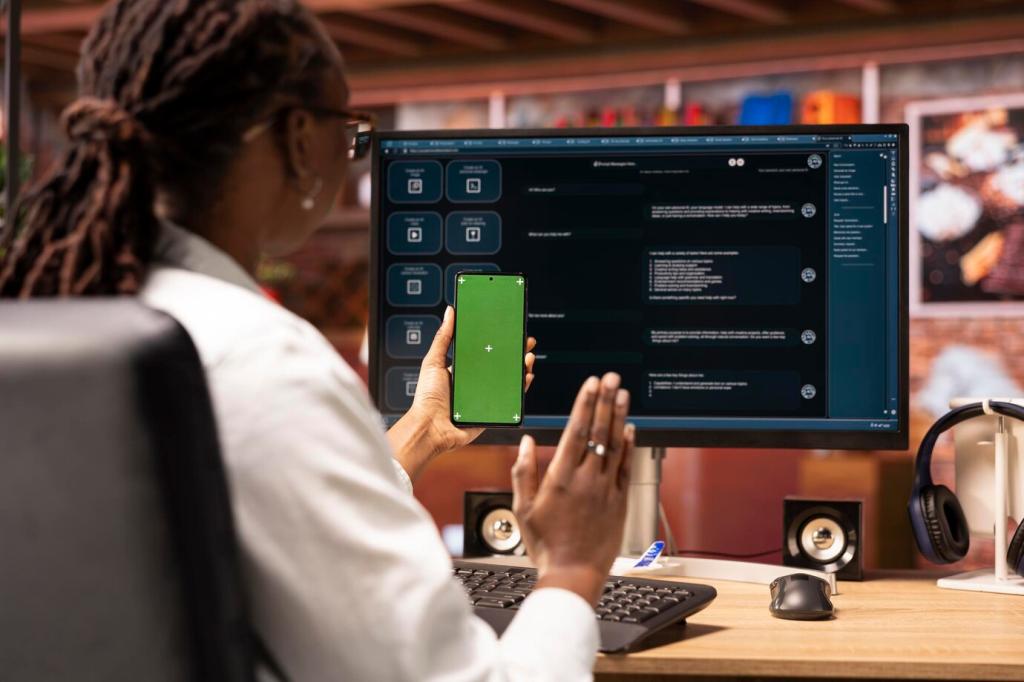Your Field Guide to the Best Tools for Mobile App Testing and Debugging
Chosen theme: Best Tools for Mobile App Testing and Debugging. Explore a practical, story-driven tour of the most reliable tools teams use to ship faster, catch issues earlier, and keep users delighted. Share your favorite setups and subscribe for deeper dives.



On-Device Debugging and Profiling
Android Studio Profiler and Logcat
Android Studio’s profiler reveals CPU, memory, network, and energy usage over time, while logcat filters help isolate events during tough bugs. A small timestamped log can illuminate why a background service misbehaved during a critical checkout.
Xcode Instruments and LLDB Power
Instruments’ Time Profiler, Leaks, and Allocations pinpoint hot paths, memory leaks, and bloat. Combined with LLDB breakpoints and watchpoints, you can surgically observe state changes and resolve elusive issues without drowning in noisy console output.
LeakCanary and iOS Leaks Instrument
LeakCanary automatically detects memory leaks in Android, showing clear retaining paths that demystify lifecycles. On iOS, the Leaks and Allocations instruments highlight problematic ownership patterns, helping teams fix slowdowns and crashes before users ever notice.
Charles Proxy and Proxyman for Traffic Insight
Charles Proxy and Proxyman decrypt HTTPS (with user-installed certificates), reveal headers and payloads, and let you map or rewrite responses. They are priceless when a staging server returns an unexpected field that silently breaks legacy clients.
mitmproxy for Scripting and Automation
mitmproxy brings a powerful, scriptable CLI for automating network tests and chaos scenarios. You can throttle bandwidth, inject faults, or replay flows in CI, reproducing hard-to-trigger errors that only appear under specific production-like conditions.
Flipper Network and Layout Inspectors
Flipper’s network plugin shows requests directly from the app, while its layout inspector reveals view hierarchies in real time. In one late-night incident, a missing header surfaced instantly in Flipper, saving hours of back-and-forth speculation.

Firebase Crashlytics for Actionable Crashes
Crashlytics groups crashes, shows stack traces, breadcrumbs, and device info, so you can prioritize by impact. Teams often discover a single NPE or fatal signal causing most of their pain, turning chaos into a short, focused patch release.

Sentry and Bugsnag for Error Intelligence
Sentry and Bugsnag add release tracking, user impact analysis, and performance signals. With alerts routed to chat, your team sees real-time regressions and can roll back or hotfix before ratings drop or churn spikes on a new version.

Instabug for User-Driven Reports
Instabug lets testers and beta users share annotated screenshots, screen recordings, and device logs with a shake. Context-rich reports transform vague complaints into reproducible steps, speeding triage and turning engaged users into invaluable co-testers.
Device Clouds and Continuous Testing
Run automated suites or exploratory tests on diverse real devices with different locales, form factors, and Android versions. These clouds surface flaky UI elements and vendor quirks, revealing failures your pristine office devices never reproduced.


Performance, Energy, and Startup Optimization
Perfetto and Systrace visualize system-wide traces, revealing jank, long frames, and scheduler delays. By correlating timeline events with app markers, teams identify expensive operations during startup and move them off the critical path for smoother launches.
Performance, Energy, and Startup Optimization
Instrument code with os_signpost and analyze in Instruments to spot slow initialization, heavy decoding, or blocking I/O. Turning one synchronous JSON parse asynchronous shaved hundreds of milliseconds, making the app feel immediately more responsive to testers.
Security, Accessibility, and Quality Gates
MobSF scans mobile builds for insecure configurations, while Frida enables dynamic instrumentation for runtime checks. Combined with policy linters, you can detect risky storage, weak TLS setups, or exposed intents before they become production liabilities.

Stories from the Trenches
The Midnight Checkout Bug
A sporadic checkout failure haunted a release candidate. Charles Proxy exposed a silent 307 redirect stripping headers. One rewrite rule and a backend patch later, tests passed, crash rate fell, and our beta users finally slept peacefully.

